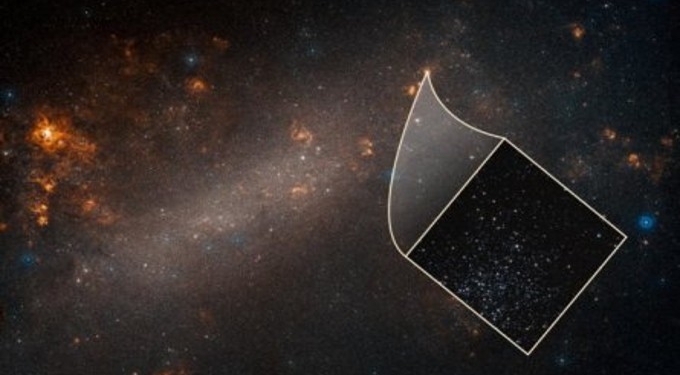
Credit: NASA, ESA, Adam Riess, and Palomar Digitized Sky Survey
Source: Science Daily
New measurements from NASA's Hubble Space Telescope confirm that the Universe is expanding about 9% faster than expected based on its trajectory seen shortly after the big bang, astronomers say.
The new measurements, published April 25 in the Astrophysical Journal Letters, reduce the chances that the disparity is an accident from 1 in 3,000 to only 1 in 100,000 and suggest that new physics may be needed to better understand the cosmos.
“This mismatch has been growing and has now reached a point that is really impossible to dismiss as a fluke. This is not what we expected,” says Adam Riess, Bloomberg Distinguished Professor of Physics and Astronomy at The Johns Hopkins University, Nobel Laureate and the project's leader.
In this study, Riess and his SH0ES (Supernovae, H0, for the Equation of State) Team analyzed light from 70 stars in our neighboring galaxy, the Large Magellanic Cloud, with a new method that allowed for capturing quick images of these stars. The stars, called Cepheid variables, brighten and dim at predictable rates that are used to measure nearby intergalactic distances.
The usual method for measuring the stars is incredibly time-consuming; the Hubble can only observe one star for every 90-minute orbit around Earth. Using their new method called DASH (Drift And Shift), the researchers using Hubble as a “point-and-shoot” camera to look at groups of Cepheids, thereby allowing the team to observe a dozen Cepheids in the same amount of time it would normally take to observe just one.
With this new data, Riess and the team were able to strengthen the foundation of the cosmic distance ladder, which is used to determine distances within the Universe, and calculate the Hubble constant, a value of how fast the cosmos expands over time.
The team combined their Hubble measurements with another set of observations, made by the Araucaria Project, a collaboration between astronomers from institutions in Chile, the U.S., and Europe. This group made distance measurements to the Large Magellanic Cloud by observing the dimming of light as one star passes in front of its partner in eclipsing binary-star systems.
The combined measurements helped the SH0ES team refine the Cepheids' true brightness. With this more accurate result, the team could then “tighten the bolts” of the rest of the distance ladder that uses exploding stars called supernovae to extend deeper into space.
















I read spme years ago that there was supposed to be another telescope launched that was going to make Hubble look elementary. I dont remember seeing anything else about it. It was to be named after a guy that was a pioneer in the space program way back ….thats all I recall about it. Anybody else know?
Just looked and found this if anyone cares. I think it was originally s/b launched in 2017?????
https://www.space.com/41016-nasa-delays-james-webb-space-telescope-2021.html